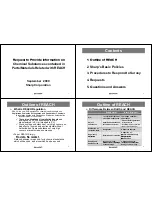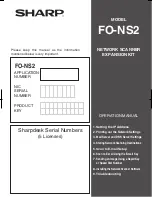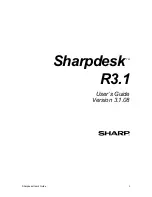
............................................................................................................................................................................................................................................................
Stack backplane bandwidth
Network Requirements
B - 4
8AL90212USAC ed01
November 20, 2008
............................................................................................................................................................................................................................................................
Stack backplane bandwidth
ACS stack backplanes (secondary Ethernet ports, eth1) carry the following types of traffic:
•
All PSTN calls that require mixing (two-party calls between ports on the same card do
not go across the backplane). Each PSTN data stream requires 100Kb/sec.
•
“Spillover” legs. When conference calls bridge servers, each conference creates a single
100Kb/sec leg linking the conferences on the two servers (often referred to as “slave
legs” or “spillover legs”). Spillover legs do not consume license ports.
Every effort is made to keep conference calls on a single media server – for example, if a
VoIP call is routed to media server A and the relevant conference is already in progress on
server B, the call will be proxied to server B if server B has an available port (license).
Thus, the number of slave legs active on the backplane at any one time is traffic
dependent. To model this, you have to make assumptions about the average number of
participants in a call, the frequency of calls, the typical call duration, and the standard
deviation of when users join calls – all of which are highly dependent on the calling
patterns of the user community.
Presence
This generates a fairly light load on a typical network. Presence
overhead is dependent on two factors: the number of desktops with
open presence applications, and the number of contacts (buddies)
active on each desktop. On My Teamwork, presence updates are
sent to a person’s contact list whenever that person’s status
changes. Each update is approximately 1500 Bytes long. A sample
calculation of bandwidth requirements for presence in a 4000-
employee company is as follows:
Number of employees
4000
Percent of employees running presence application at a given
time
20%
Average number of contacts (“buddies”) per employee
24
Number of updates required for each open application
(= number of co1)
25
Average number of status updates (e.g., on the phone, online,
away) per employee every hour
4
Total updates per hour (4000 * 0.20 * 25 * 4)
80,000
Size of each update
1500 Bytes
Total presence data per second (80,000 * 1500 * 8 / 3600)
264 Kbps
Содержание OmniTouch ACS 7.1.4
Страница 6: ...Contents v i 8AL90212USAC ed01 November 20 2008...
Страница 18: ...To connect the server to the network Facility Planning 2 6 8AL90212USAC ed01 November 20 2008...
Страница 22: ...To verify your Ethernet port configuration Planning Your LAN 3 4 8AL90212USAC ed01 November 20 2008...
Страница 36: ...To prepare your network Planning Your OmniTouch ACS Stack 6 4 8AL90212USAC ed01 November 20 2008...
Страница 40: ...Application desktop sharing and editing Planning for Data Conferencing 7 4 8AL90212USAC ed01 November 20 2008...
Страница 118: ...Media servers Stack Design and Operation A 6 8AL90212USAC ed01 November 20 2008...
Страница 136: ...To remove an ActiveX object Supported Browsers and Recommended Settings D 6 8AL90212USAC ed01 November 20 2008...
Страница 146: ...Acceptance checklist Installation Checklists E 10 8AL90212USAC ed01 November 20 2008...
















































